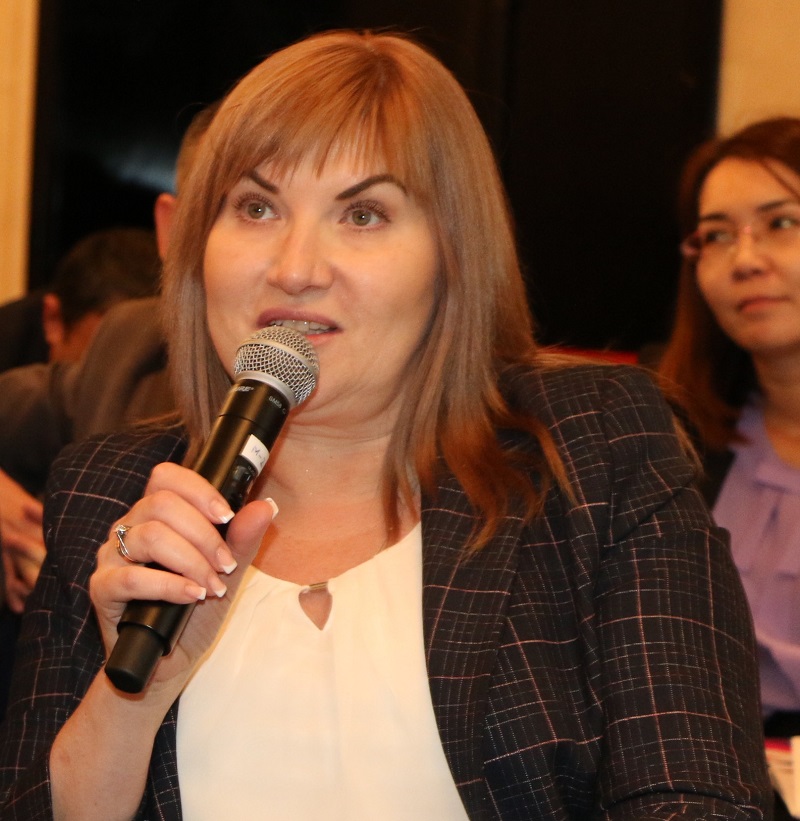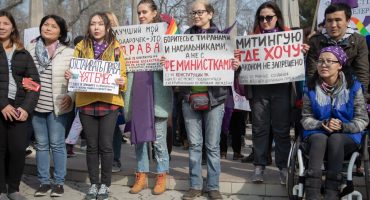By mid-August, Taliban militants seized much of Afghanistan; on August 15, they took control of Kabul without a fight. President Ashraf Ghani fled the country; the Taliban try to establish their rule and intend to transform Afghanistan into Islamic Emirate. Meanwhile, the rest of the world is rethinking what happened: countries are deciding how to build foreign policy relations with new Afghanistan, as well as what to do with the refugees, who, presumably, will flee the country.

Инга Сикорская
Director of the School of Peacemaking and Media Technology in Central Asia Inga Sikorskaya spoke with CABAR.asia Media School about how Central Asian media should cover the situation in order not to increase xenophobia in society towards refugees, and much more.
– How should the journalists report on refugees?
– According to the standards of covering diversity issues, which include such social groups as “refugees” (people who already have this status), “asylum-seekers” and “forced migrants” (those forced to move to a certain country out of fear for their lives and seeking refugee status), the journalist must first analyse how media covered this issue before and identify the gaps.
Often, the media report on such people only in crime news, or in a humiliating context, thereby instilling fear among the audience. A reporter should follow a peacemaking approach: spend a few days in a refugee camp with these people, describe what you saw, how they live, whether they have access to water, their children – to education, healthcare. Let them tell the story in their words. Find people among them who were able to reintegrate into society, and tell about them. Do not forget about ethical terminology and visual content.
During my recent trip to Afghanistan, I spoke a lot with colleagues and ordinary people and I think that in fact, no one intends to flee to Kyrgyzstan, for example. First, you will be surprised, but the Afghan people are the patriots of their country. They can bear the poverty, but the main thing for them – to stay at their homes. Second, those who want to leave Afghanistan after the Taliban takeover do not intend to go to the Central Asian countries at all; they want to go to the United States, to Europe.
– Nevertheless, our authorities have already announced they are going to accept Afghans fleeing the Taliban regime.
– Yes, they announced the intention to accept 1.2 thousand people, but it is not a sure thing that it will be Afghans. It is quite possible that they meant ethnic Kyrgyz people from Badakhshan, who were previously not allowed across the Tajik border. In addition, we must understand that Afghans have already learned the difficult lesson in Kyrgyzstan: some people, who applied for asylum, lived here for 25 years, and left or died, without receiving refugee status.
– In addition, people are afraid not so much of those fleeing the Taliban, as of the Taliban themselves, who will now go to the Central Asian countries, as some experts claim.
– The Taliban have nothing to do here either. What happened in Afghanistan is the internal political processes and the geopolitical struggle for influence in the region, which various experts and politicians used in their mainstream forecasts to spread panic.
– It turns out that journalists help such politicians.
– To some extent. Even today, sensationalised media are contributing to the creation of a negative stereotype not only about refugees, who, by the way, did not appear yet, but also about any foreigners arriving in the country. They maintain and develop a prejudice against people dressed differently, or speaking different languages.
– How does this happen?
– Our society, unfortunately, has many negative stereotypes about Afghanistan. What are the media doing against the background of general hysteria and panic? They post tweets of unknown people without even checking the facts. Authoritative media quote users who post something like, “I went out for a cappuccino, and there were millions of Pakistanis around”.
– What is wrong with this tweet?
– The problem is not the tweet, but the fact that the media reposted it. The phrase “millions of Pakistanis” is exaggerating data. By publishing it, the media commits a gross journalistic error, relaying an outrageous stereotypical perception. It can be reposted, but, according to the journalistic standards and a peacemaking approach, it is necessary to place the facts in the appropriate context. This will remove the problem and enable the audience to understand what is happening in reality. Given the complex political environment, the context should be broad, neutral, not inciting hatred or fear.
Moreover, this is not the only example. You probably noticed the materials about Bishkek residents complaining about the alleged influx of foreigners to the capital of Kyrgyzstan. These messages are also based on user-generated content. Moreover, the media not only cite online users but also use their photos. The photos of people in unusual for Kyrgyz people clothes, possibly Pakistani or Indian students, are being reposted. These clothes are called Pashtun, although it is wrong. Therefore, by creating such messages, the journalists trigger certain groups of people and this, as a result, can lead to hate crimes.
– Would it be right to create a material explaining how Pashtun clothes differ from other national clothes?
– What for? People should not be judged by what they wear. This is unacceptable for the media. Focusing on differences in a particular socio-political context leads to intolerance and hostility. Social media users do this because they are incompetent and lack a degree of journalistic responsibility. But why do the journalists allow this? This is an intolerant approach. A person can wear any clothes, if, of course, we are not talking about some kind of dress codes in official institutions; he/she can speak the most comfortable language. In case the media want to show that there really are some rumors about an alleged influx of refugees, they should conduct an investigation using the tools of Peace Journalism: to talk to these people, understand who they are, and provide the audience with a big picture.
– The media tried to clarify the situation: they published the answers of the border service on how many foreigners had arrived in Kyrgyzstan.
– What was the point of finding this out? The foreigners are always a targeted group in such countries as Kyrgyzstan, where there is a problem with tolerance. In this situation, all of a sudden, the media asked the border guards for information about the number of foreigners who arrived in the country (from Iran, Afghanistan, Pakistan, etc.). Why, in the current disturbing socio-political context, cover this topic in one-sided news? They should provide balanced news, and should not create fear. In addition, is Kyrgyzstan not positioning itself as a tourist destination? We should welcome any foreigners if so.
– What approach should be followed when covering refugees-related issues?
– Now, the main thing is to accurately verify the information and try to balance it. In peacemaking journalism, reporting should focus on peace rather than conflict. In Peace Journalism, there is a rule of “Three Don’ts”:
- do not soften the conflict;
- do not search for those guilty of the conflict;
- do not spread opinions and accusations as established facts.
This approach enables editors and reporters to make choices, that is, decide what facts and in what context to communicate to the audience for the consideration of non-violent responses to the conflict. The conflict here means not only a military conflict but also any situation that can become a source of potential conflicts in society.
– What should journalists remember when covering refugees-related issues?
– Before creating a negative image of people who may possibly arrive from the conflict zone, which I deeply doubt, we need to understand that each of us could find him/herself in their place. Now, I updated all my training materials for journalists and included there the practice of own feelings and understanding that the world is dynamic and unstable. No one can know what will happen tomorrow. The population of any country can be involved in a military conflict. That is, any of us can become a refugee and forced migrant in another country. Because of the appearance, language, cultural differences (which do not comply with some stereotypes in society), with the “support” of unethical, incompetent journalists, any person can be attributed to a target group hated by others.
Title photo: AFP / Scanpix / LETA
This publication was produced as part of the mentorship programme under the Development of New Media and Digital Journalism in Central Asia project delivered by the Institute for War and Peace Reporting (IWPR) with support from the UK Government. It does not necessarily reflect the official views of IWPR or the UK Government
If you have found a spelling error, please, notify us by selecting that text and pressing Ctrl+Enter.





